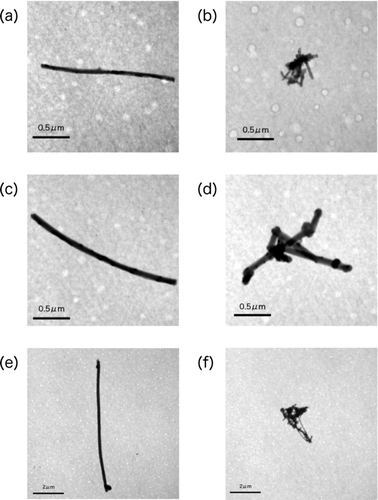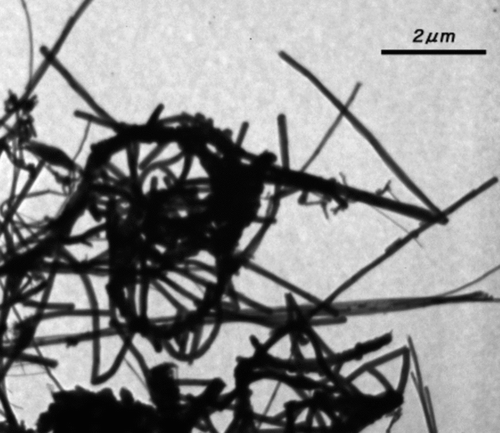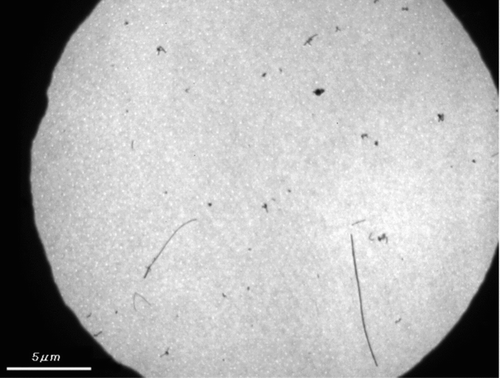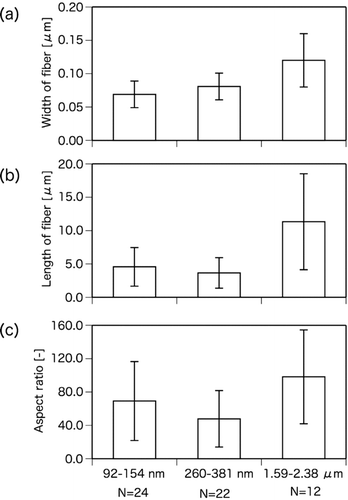Figures & data
FIG. 1 Schematic diagram of the generation system and nose-exposure chamber for airborne multi-walled carbon nanotubes (MWCNTs).
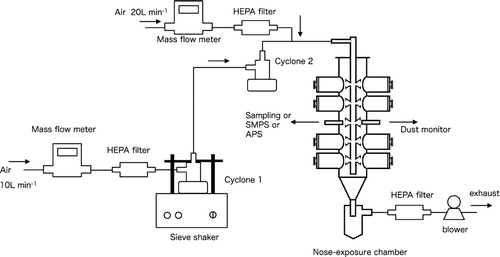
FIG. 2 (a) Configuration of the cyclone 1 separator. MWCNTs were mixed with stainless steel balls in the cyclone with a 50% cut-off particle diameter of 8.8 μm at 10 L min–1 made of aluminum. The cyclone was fixed on the sieve shaker, and HEPA-filtered compressed room air was passed through the cyclone during shaking. (b) The picture of cyclone 1 shows the top part (air-inlet and outlet) and the separable bottom part (storage cup). There are MWCNTs (0.24 g) and stainless steel balls (35 g) in the storage cup (c) before and (d) after shaking on the sieve shaker. Flocculated MWCNTs were packed and formed a mat-like structure on the bottom of the cup after shaking.
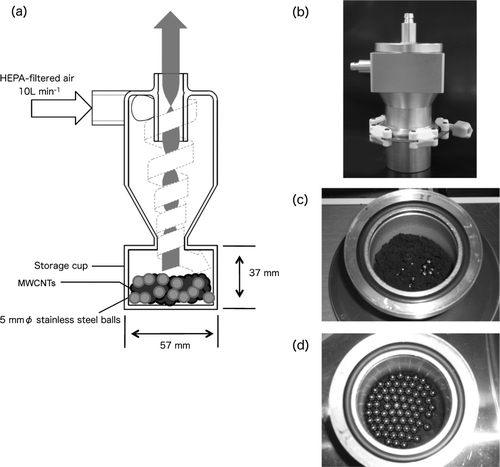
FIG. 3 Relationship between (a) amplitude of the sieve shaker and relative particle concentration (CPM) of airborne MWCNTs and (b) mass concentration by means of quartz fiber filter and CPM. Airborne MWCNTs were supplied with air at flow rate of 30 L min–1 and the concentration was monitored at nose-exposure chamber.
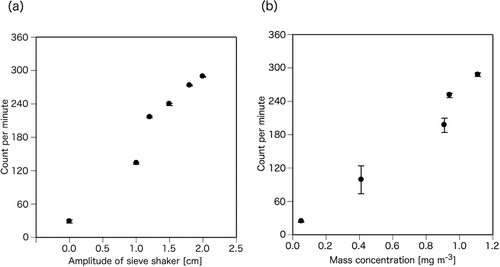
FIG. 4 (a) Time-course changes in relative particle concentration (CPM) of airborne MWCNTs for 2 hours with 5 reproducibility tests. (b) The average and SD of CPM. Airborne MWCNTs were generated by the shaker at amplitude of 1 cm and supplied with air at flow rate of 30 L min–1. Concentrations were monitored at the nose-exposure chamber.
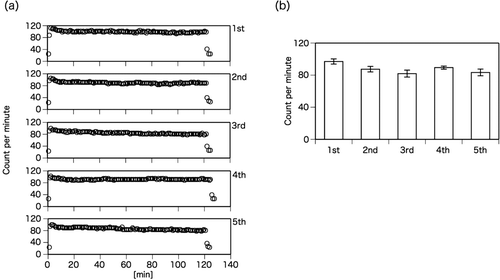
FIG. 5 (a) Mass-weighted size distribution of airborne MWCNTs measured by LPI (mass-based aerodynamic measurement). Particles were collected on a grease-coated gold foil. (b) Size distributions of airborne MWCNTs as measured with SMPS (number-based electrical mobility measurement) and APS (number-based aerodynamic measurement). (c) Comparison between LPI and APS in normalized size distributions. Number-based aerodynamic data obtained by APS were converted to mass-based data assuming that the values of particle density and dynamic shape factor were constant over all sizes. Airborne MWCNTs were generated as shown in the legend to .
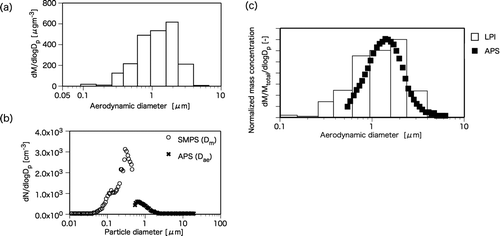
TABLE 1 The properties of balls mixing with MWCNTs to generate airborne particles
FIG. 6 The sensitivity in the particle concentration measurement. Airborne MWCNTs were generated by the shaker (amplitude, 1 cm) and supplied with air (flow rate, 30 L min–1) and the concentration was monitoring at nose-exposure chamber. (a–c) Types of balls are shown in . The tests with 5 mmϕ stainless steel balls were repeated 3 times to check the reproducibility; (a) Geometric mean diameter and modal diameters measured with SMPS (D m = 10–486.97 nm); (b) relative particle concentration (CPM); (c) Particle number concentrations measured with SMPS (D m = 10–486.97 nm). (d) Amount of 5 mmϕ stainless steel balls in relative particle concentration (CPM).
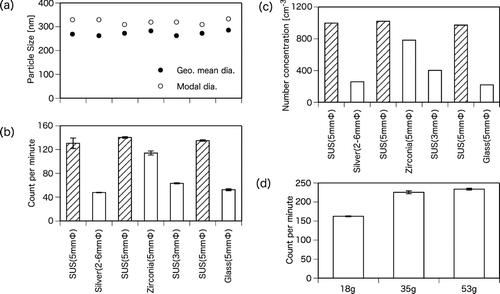
FIG. 8 TEM image for aerodynamic-classified airborne MWCNTs. Airborne MWCNTs were generated as shown in the legend to and collected at nose-exposure chamber by LPI. (a, c, e) Dissociated fiber-like MWCNT particles and (b, d, f) agglomerated MWCNT particles. (a, b) Particles were collected on the stage 3 (D ae = 92–154 nm, magnification × 30000), (c, d) the stage 5 (D ae = 260–381 nm, magnification × 30000), and (e, f) the stage 9 of LPI (D ae = 1.59–2.38 μm, magnification × 10000).
